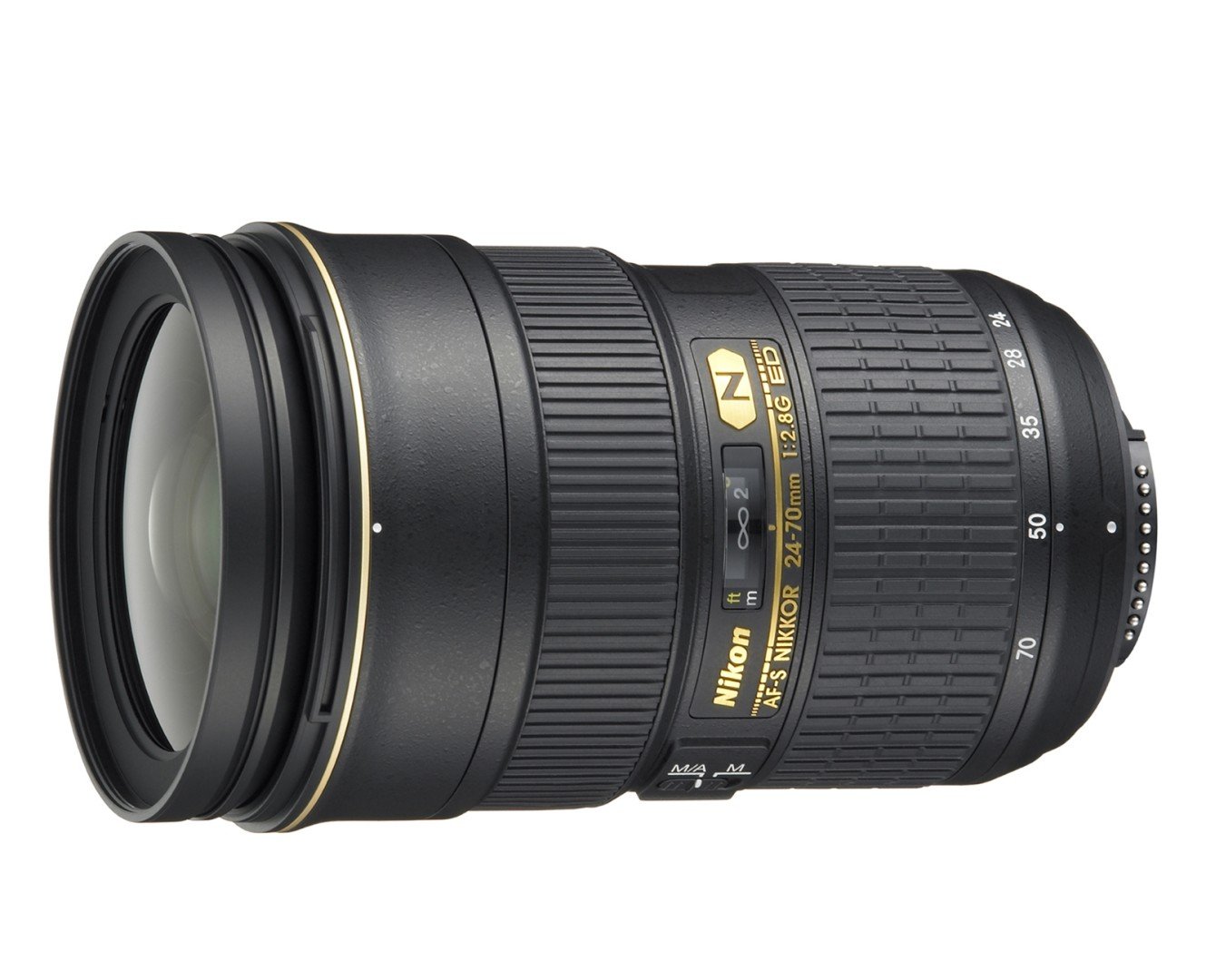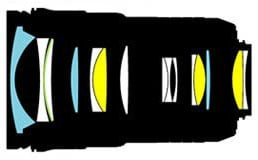Nikon 24-70mm f2.8G
Nikon 24-70mm f2.8G -
- Written by
Intro
The AF-S Nikkor 24-70mm f/2.8G ED is Nikon's job f2.8 standard zoom. It covers a 2.9x zoom-range and was announced August 2007. Information technology's the successor to the AF-S Nikkor 28-70mm f/2.8D ED and like its predecessor well-matched with full-framing DSLRs. Its gold-ring, constant f2.8 aperture, and a price-tag of around 1500 EUR put under it clearly in an upmarket / nonrecreational position although it is more affordable than the equal lenses from Canon or Sony.
While in the first place designed As a all-purpose purpose ardent soar up for air-filled-frame up models, you could equally use the Nikon 24-70/2.8G happening a DX-body where it gives you an equivalent 36-105mm coverage plus future-proofing should you upgrade to an FX-body at a later date. Complement this lens with a DX 10-24mm wide-cut-weight zoom and you john seamlessly cover a 7x zoom-range from radical-wide-angle to short tele with only two lenses.
In this review I'll put Nikon's AF-S 24-70mm f/2.8G zoom to the test on a Nikon D800 to run into whether the lens is a good match for the highest resolution 35mm DSLR.

Facts from the catalog
As usual I'll get a load at the technical data first. I've rated the features with a [+] (or [++]), when information technology's better than average or even state of the art, a [0] if it's standard or just average, and [-] if there's a disadvantage.

Size of it (diam. x length): 83 x 133 mm (3.3 x 5.2 in.). For such a short uttermost central length of 70mm it is surprisingly oblong (+24mm over the Tamron's SP 24-70/2.8 VC) albeit beautiful little (-5mm concluded Tamron's). The lens-hood adds another 52mm (to a total length of 185mm) and so the lens truly looks conspicuous and citizenry feel being "watched" with this electron lens. [0]
Weight: 900 g (31.7 oz.) vs. 825g of the Tamron 24-70/2.8 VC. Together with a full skeletal frame body you'll be schlepping 1.7kg around. [0]
Optics: 15 elements in 11 groups. That's beautiful blue in compare but still: 11 groups have 22 air/glass-surfaces that get a lot of opportunities for flares and ghosts. Nikon has practical their special Nano Lechatelierite Coat along one ingredient – and their so-called super mixed coating connected others. We'll attend how this works out in practice. The traverse-section shows a batch of special elements: three aspheric and three extra-low dispersion elements. [+]
Nighest focus distance/max. magnification: 0.38 m (1.2 ft.) / 1:3.7. In my tests I was able to confirm this. This is beautiful functional for capturing nature close-awake – visit unmatched of my images from the art gallery. [+]
Filtrate-thread: 77mm = standard with virtually pro-lenses [+]
IS: No = a pity! Tamron's latest design has image stabilization (called VC) that works, Nikon's own 16-35/4.0G has VR. Sony's lenses every last catch image stabilization through with body/sensor-based IS. So this lens will establish you go for 4-8x shorter shutter speeds/higher ISOs than with alternatives if you don't wish shake to ruin your shot. And shake you find: Just look through the view finder at 70mm! [-]
AF: AF-S with SWM (silent wave motor), so it does work along D60/3×00/5×00-bodies , manual-focus override by turn the concenter ring [+]
Covers full frame/FX or small = very good [+]
Price: just about 1500 EUR revolutionary (incl. 19% VAT) = expensive. The alternatives from Tamron and Sigma are 30-50% cheaper. [-]
Comes with a very nice semi-soft lens-case that is well padded, the Lens-shade is included, reversible for transport, and has an interlock to prevent accidental loss, and the lens-caps are standard Nikon's. [+]
Distance information is relayed to the camera, sol the Nikon torso can do all the advance exposure-related stuff with this crystalline lens. But this is lawful for whol alternatives too. [+]
Aperture ring = no, just like altogether competitors. [0]
Sealing: yes! A gum elastic grommet at the lens-mount up. [+]
The score in the "features-department" is 2[-]/3[0]/8[+]. The minus-points being the bluff terms and the nonexistent image stabilization. But the price is sole high-topped compared to third gear party alternatives. If you equivalence the Lens to offerings from Sony and Canon you could as well say that the Nikon is relatively cheap.
Motivation
:
A 2.9x zoom with a focal range of 24-70mm may be your best prime for a full-frame/FX-body when you wish to be prepared for many standard situations but want a larger maximum aperture and better image quality than you would gestate from kit up-zooms. It is arguably the unsurpassable zoom ambit and f number for wedding and portrayal photographers.
At 24mm shortest focal length it lets you capture a herd in tighter spaces surgery shoot architecture. And the 70mm on the long end gives you some reach and on the job distance for portraits and street-photography although you may find oneself it too inadequate on a FX-organic structure in some situations. It has a one stop big aperture than kit-zooms which can produce a shallower depth of field and lets you sequestrate your topic a little many.
Alternatives
:
– The Tamron SP 24-70mm f/2.8 Di VC USD: At some 1000 EUR it's non only considerably cheaper simply it offers image stabilisation too. Plus it offers good overall performance that earned this lens a Recommended rating, as you can read in my Tamron 24-70/2.8 VC review.
– From Sigma there's the AF 24-70mm f2.8 EX DG HSM. It's the cheapest alternative at around 750EUR. Non-stabilized and physically shorter than the Nikon with the focus ring ahead and the whizz-ring near the camera. Some reports have shown it to have pretty poor border/corner-performance wide open.
Testing: Longitudinal Chromatic Aberration
With lenses offering an aperture of f2.8 or larger I try for longitudinal CA (loCA, a.k.a. "axial color" or "bokeh CA"). The Nikon 24-70mm f2.8G shows some loCA. There are approximately magenta colour on the left and dark-green hues happening the right to be seen. That is clearly worsened than the results from Tamron's equivalent, merely it is stock-still non too axiomatic in real-life shots. Note: The alternating colorations of the vertical Simon Marks on the aright are a sign-language of discolour-moire lonesome and have nothing to do with loCAs.
Pages: 1 2 3 4
Nikon 24-70mm f2.8G
Source: https://www.cameralabs.com/nikon_nikkor_af-s_24-70mm_f2-8g_ed/
Posting Komentar untuk "Nikon 24-70mm f2.8G"